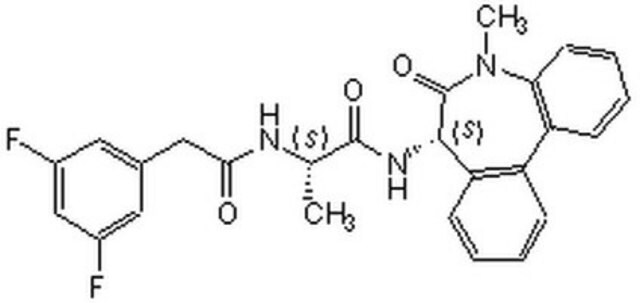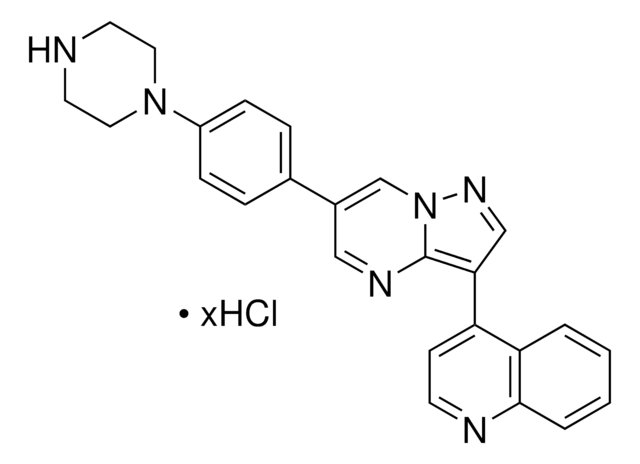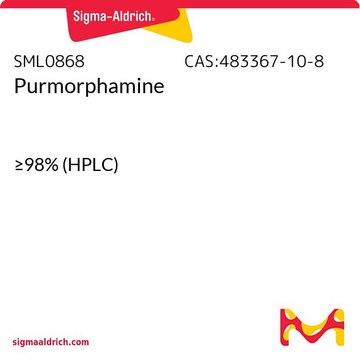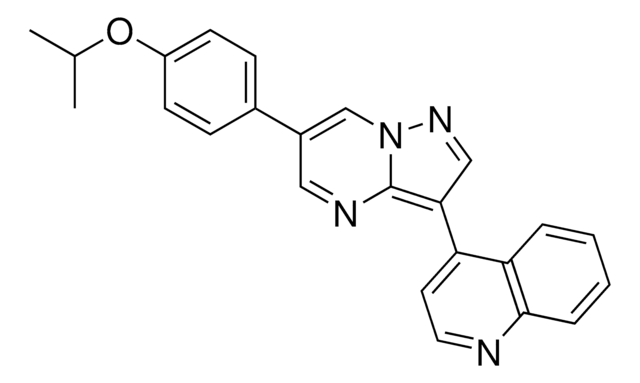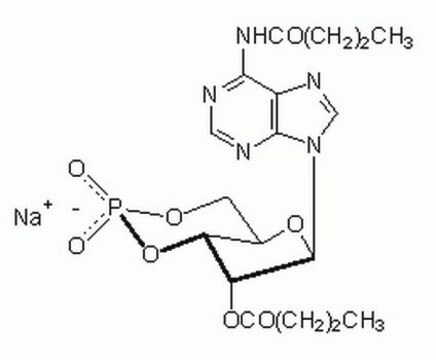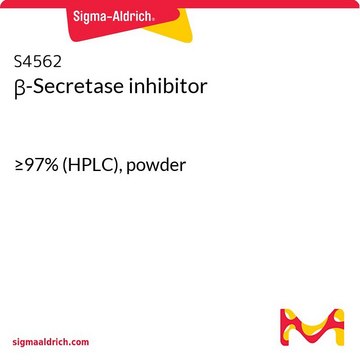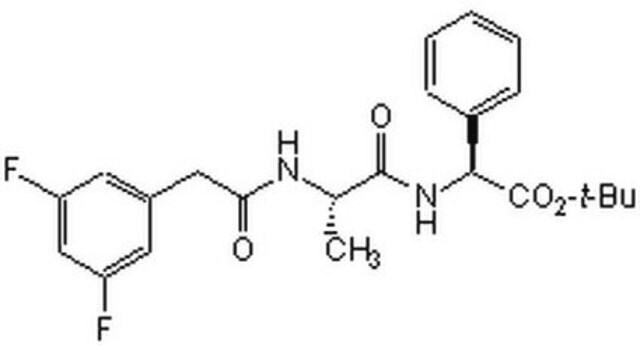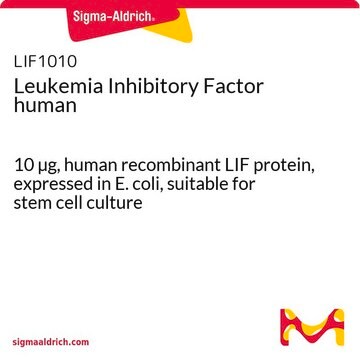565790
Compound E
≥95% (HPLC), solid, γ-secretase inhibitor, Calbiochem®
Sinonimo/i:
γ-Secretase Inhibitor XXI, Compound E, (S,S)- 2-[2-(3,5-Difluorophenyl)-acetylamino]-N-(1-methyl-2-oxo-5-phenyl-2,3-dihydro-1H-benzo[e][1,4]diazepin-3-yl)-propionamide, Compound E
About This Item
Prodotti consigliati
product name
γ-Secretase Inhibitor XXI, Compound E, This g-secretase inhibitor, CAS 209986-17-4, is a cell-permeable, potent, selective, non-transition-state analog inhibitor of γ-secretase and Notch processing. Lowers Aβ levels in APP transgenic mice
Saggio
≥95% (HPLC)
Forma fisica
solid
Produttore/marchio commerciale
Calbiochem®
Condizioni di stoccaggio
OK to freeze
protect from light
Colore
white
Solubilità
DMSO: 10 mg/mL
Condizioni di spedizione
ambient
Temperatura di conservazione
2-8°C
InChI
1S/C27H24F2N4O3/c1-16(30-23(34)14-17-12-19(28)15-20(29)13-17)26(35)32-25-27(36)33(2)22-11-7-6-10-21(22)24(31-25)18-8-4-3-5-9-18/h3-13,15-16,25H,14H2,1-2H3,(H,30,34)(H,32,35)/t16-,25?/m0/s1
JNGZXGGOCLZBFB-YPHZTSLFSA-N
Descrizione generale
Azioni biochim/fisiol
γ-secretase and Notch processing Ab40 in CHO cells overexpressing wild type bAPP
Confezionamento
Attenzione
Ricostituzione
Altre note
Jung, K.M., et al. 2003. J. Biol. Chem.278, 42161.
Murakami, D., et al. 2003. Oncogene22, 1511.
Campbell, W.A., et al. 2003. J. Neurochem.85, 1563.
Berechid, B.E., et al., 2002. J. Biol. Chem.277, 8154.
Lee, H.J., et al. 2002. J. Biol. Chem.277, 6318.
May, P., et al. 2002. J. Biol. Chem.277, 18736.
Scheinfeld, M.H., et al. 2002. J. Biol. Chem.277, 44195.
Ni, C. Y., et al. 2001. Science294, 2179.
Beher, D., et al. 2001. J. Biol. Chem.276, 45394.
Doerfler, P., et al. 2001. Proc. Natl. Acad. Sci. USA98, 9312.
Seiffert, D., et al. 2000. J. Biol. Chem.275, 34086.
Note legali
Codice della classe di stoccaggio
11 - Combustible Solids
Classe di pericolosità dell'acqua (WGK)
WGK 3
Punto d’infiammabilità (°F)
Not applicable
Punto d’infiammabilità (°C)
Not applicable
Certificati d'analisi (COA)
Cerca il Certificati d'analisi (COA) digitando il numero di lotto/batch corrispondente. I numeri di lotto o di batch sono stampati sull'etichetta dei prodotti dopo la parola ‘Lotto’ o ‘Batch’.
Possiedi già questo prodotto?
I documenti relativi ai prodotti acquistati recentemente sono disponibili nell’Archivio dei documenti.
I clienti hanno visto anche
Il team dei nostri ricercatori vanta grande esperienza in tutte le aree della ricerca quali Life Science, scienza dei materiali, sintesi chimica, cromatografia, discipline analitiche, ecc..
Contatta l'Assistenza Tecnica.